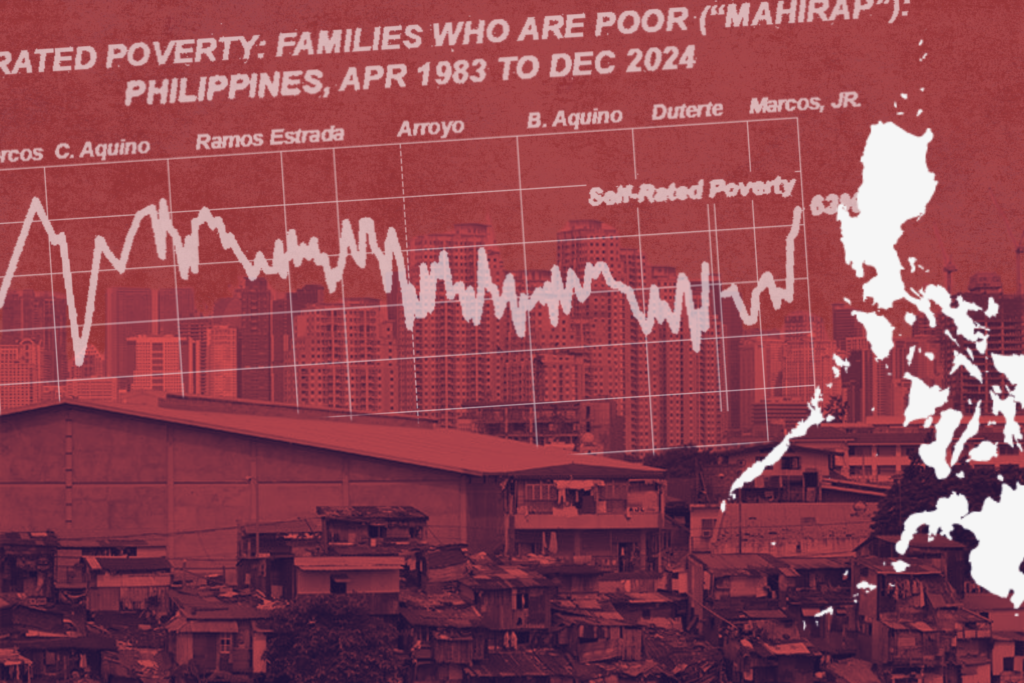Unpacking SWS’ self-rated poverty, official poverty stats

THE FINDINGS of public opinion polls are newsworthy. These are consistently given prominent time and space by the media, as the latest Social Weather Stations (SWS) survey findings on self-rated poverty (SRP) received in recent coverage. Released on January 8, these revealed 63 percent, or 17.4 million Filipino families, considered themselves poor — the highest SRP level in 21 years.
The survey made front page headlines in the Philippine Daily Inquirer and the Philippine Star and placed among the top news stories on News5’s Frontline Pilipinas Weekend, One News’ Brunch and The Big Story, and ANC’s The World Tonight. The reports, however, did not explain what SRP represents. The media did not refer to the methodology, the questions used in the survey, and most important, the difference between SRP and other measures of poverty.
What is Self-rated Poverty?
SRP is a subjective indicator of wellbeing that includes households’ perceptions of poverty (Philippine Daily Inquirer).
The SWS survey asks household heads a simple question: “Saan po ninyo ilalagay ang inyong pamilya sa kard na ito? [Where would you place your family in this card?]” – which gives three categories: mahirap, hindi mahirap, or borderline.
Defining Poverty
GMA News Online referred to poverty as the inability of households to meet and sustain their minimum food and non-food needs.
The Philippine Statistics Authority (PSA) measures poverty by calculating how much it would cost to feed a family of five (“A family with five members needed at least PhP 13,873 per month to meet their minimum basic food and non-food needs in 2023.”) Families whose income falls below the poverty threshold are considered poor.
The PSA sets different thresholds for different regions and will adjust the amount given the conditions from year to year.
SWS and PSA differ in methodology and approach and may provide different findings as these reflect different realities.
How realistic is SRP?
While SRP is subjective, Economist Mahar Mangahas has explained its validity in indicating actual experience of poverty. He wrote in his study “The Social Weather Reports of economic well-being in the Philippines” that it is the “most rapid and operational survey-based system for tracking poverty in the world.” The self-rated thresholds for poverty and food poverty reflect a more realistic view in terms of household budgets and the cost of living compared to the “unrealistically low” PSA poverty line.
The Philippine Institute for Development Studies (PIDS) has agreed that SRP captures the reality of poverty in the Philippines, which is characterized by income inequalities.
News reports should include some background on the nature of the SRP and explain its difference, including the approach used from what the PSA does to establish poverty statistics. Both are valid and the results they release to the public should be adequately explained to ensure a meaningful discussion, with everyone using the same terms with the same understanding.
Meanwhile, journalists should continue to report the stories of the poor and the marginalized which can help identify policies and strategies that have been proven effective to alleviate the plight of the poor.
Leave a Reply